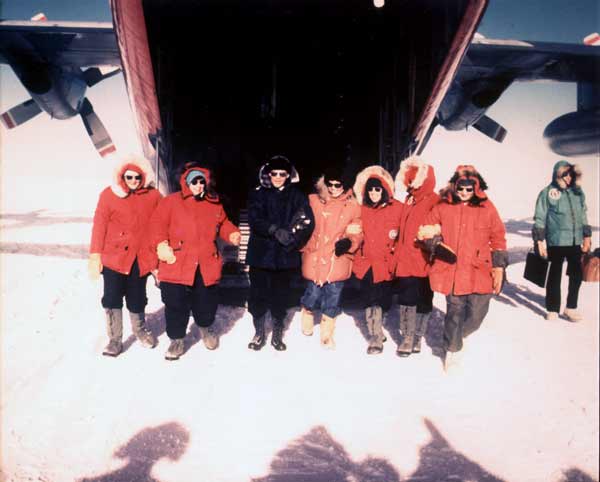18 years ago, as the world was settling into the new millennium, two women were making history; on the 4th January 2000, Fiona Thornewill and Catharine Hartley together became the first British women to travel the 680 miles across Antarctica to the South Pole on foot.
BBC location manager Hartley had resolved herself to become the first British woman to go to the South Pole and raised the £30,000 needed (by way of sponsorship and loans) to take part in an amateur expedition, along with Thornewill and her husband, after discovering that only six women (and not one British woman) had ever made journeys overland to either Pole. After a gruelling trek of more than 60 days, that Hartley describes as “like walking in the inside of a ping pong ball” the team made it to the South Pole a few days after the turn of the New Year.
As Hartley realised, getting on to the ice hasn’t been an easy task for women. Scores of applications to join Antarctic explorations were sent by women in the early twentieth century (One particular British Antarctic Expedition received over 1300 applications from women) and every one of them was denied. Women were excluded from explorations as it was believed that women would not only not be able to cope with the extremes in temperature, or carry the heavy equipment required, but that they would not be capable of handling crisis situations that may occur on the ice. Women were considered to be physically and mentally inferior to the male explorers.
Those who would become the first women to travel to Antarctica would do so simply by being wives accompanying their husbands; the first woman to set foot onto the land of Antarctica was Danish-Norwegian Caroline Mikkelsen, who was travelling with her husband in 1935. But even that was deemed unacceptable by some; when Jackie Ronne and Jennie Darlington decided to accompany their respective husbands on their trip in 1946, the other men on the team were allegedly so outraged that they petitioned to stop it happening. Even when women scientists began researching in Antarctica they would be forced to do so from ships off the coast, as they were not permitted to explore on land.
Until as late as 1969 the United States had a total ban on women working in Antarctica, but as soon as that ban was lifted the women scientists of the US wasted no time. Late in the same year a four-strong team, led by scientist Lois Jones, were the first all-female team to work on Antarctica and were also part of the group of six women who became the first women in history to visit the South Pole. At a request made by Jones, six out of the seven women who were working on Antarctica at the time journeyed together to The Pole. Pamela Young, a biologist from New Zealand, and Jean Pearson, a reporter for the Detroit Free Press, joined Jones and her team, Terry Tickhill, Eileen McSaveney, Kay Lindsay, on a flight to the Pole and on the 12th November 1969 all six of them stepped out of the plane arm in arm (in an act of solidarity that Fiona Thornewill and Catharine Hartley’s journey echoed 30 years later) to all become the first women to reach the South Pole.
It is a powerful image; six women united, walking out together onto a piece of the globe that no other woman had ever set foot on, not one of them wanting to be “the first” alone. Perhaps, almost 50 years later, in a year that has begun with continuing accusations of harassment, unequal pay and general inequity between the sexes, what women need is to channel some of the solidarity that those women explorers felt in moment.

